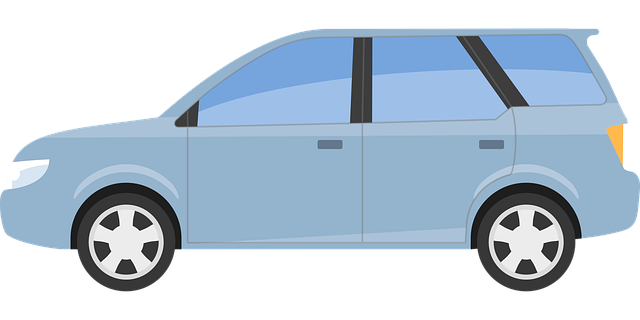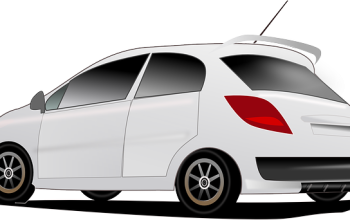US car insurance premiums rose 19.2% in 2023, driven by advanced vehicle repairs, distracted driving accidents, and higher company costs. To navigate this trend, drivers should understand coverage types (comprehensive, collision) and compare quotes from multiple providers, considering deductibles, limits, location, and driving history for budget-friendly, adequate protection. Key liability insurance types include bodily injury and property damage coverages, balancing protection with financial capability to avoid overspending.
In today’s rapidly evolving insurance landscape, understanding car insurance has become more complex than ever. Recent data reveals a stark trend: US auto insurance premiums surged by nearly 20% in the last year, outpacing inflation. This rapid increase highlights the need for consumers to demystify their coverage options. This article guides you through navigating these complexities, offering insights into factors driving premium growth and practical strategies for making informed choices. From comprehending different types of vehicle coverage to effectively comparing quotes and evaluating liability insurance, equip yourself with knowledge to protect both your asset and your financial well-being.
- Understanding Car Insurance Premiums Surge
- Navigating Types of Vehicle Coverage
- Comparing Car Insurance Quotes Effectively
- Evaluating Auto Liability Insurance Options
Understanding Car Insurance Premiums Surge

In recent years, car insurance premiums in the United States have experienced a notable surge, increasing by nearly one-fifth (19.2%) from November 2022 to November 2023. This substantial rise outpaces even the inflation rate, as measured by the Consumer Price Index, which only grew by 3.1% during the same period. Several factors contribute to this trend, including rising repair costs due to advanced vehicle technologies, increased claims from accidents linked to distracted driving and poor road conditions, and the general rise in insurance company operating expenses.
Consequently, drivers are facing higher premiums, which necessitates a deeper understanding of their coverage options. Staying informed about these changes allows individuals to make more thoughtful decisions when shopping for car insurance. By comparing quotes, reviewing policy details, and evaluating auto liability insurance, consumers can secure adequate protection for their vehicles and safeguard their financial well-being in case of unforeseen events.
Navigating Types of Vehicle Coverage

Navigating different types of vehicle coverage is essential to ensure adequate protection for your car and yourself. Auto insurance policies can be complex, offering various options tailored to specific needs. Comprehensive auto insurance provides all-encompassing coverage, protecting against a wide range of risks, from accidents to natural disasters. It covers repairs or replacements for your vehicle, offering peace of mind in case of unforeseen events.
On the other hand, collision coverage specifically addresses damages resulting from collisions with other vehicles or fixed objects. This type of insurance is often optional but can be crucial for protecting against significant financial burdens associated with accidents. By understanding these coverage types and their implications, you can make informed choices to safeguard your investment in your vehicle and manage potential risks effectively.
Comparing Car Insurance Quotes Effectively

When comparing car insurance quotes, it’s essential to go beyond simply looking at the lowest price. Different policies offer various levels of coverage, and what seems like a bargain might leave you underinsured. Assess each quote based on factors like deductibles, coverage limits, and what’s included in the policy. For instance, comprehensive and collision coverages protect against accidents and damage but vary in cost and eligibility requirements.
Start by gathering quotes from multiple insurance providers and reviewing their terms carefully. Consider your driving history, vehicle make and model, and location to get a clearer picture of potential costs. Online tools can streamline this process, allowing you to input your details once and receive comparable offers from various companies. Remember, the most suitable policy aligns with your needs, offering adequate coverage without exceeding your budget.
Evaluating Auto Liability Insurance Options

When evaluating auto liability insurance, it’s essential to understand the different coverage types and their implications. This includes comprehending the difference between bodily injury liability and property damage liability. Bodily injury liability covers medical expenses for any individuals injured in an accident caused by you, while property damage liability pays for repairs or replacements to someone else’s vehicle or personal property, up to the limits of your policy. It’s crucial to select coverage amounts that align with your financial resources and potential risks.
Additionally, consider your driving history and the number of claims you’ve filed previously, as these factors influence premium calculations. Car insurance companies use this information to assess risk levels, so accurately representing your driving record is vital for obtaining competitive rates. By carefully reviewing these aspects, you can tailor your liability coverage to ensure adequate protection without overspending.
In light of these industry shifts, understanding car insurance complexities is more critical than ever. By grasping different coverage types and comparing quotes, you can navigate the market effectively, ensuring you’re not only protected but also managing your financial well-being in the face of surging premiums. Stay informed, make educated decisions, and drive with peace of mind.



